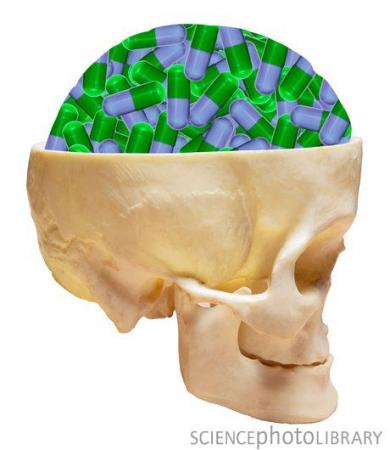当谷氨酸和多巴胺的联合信号失效时,大脑对奖励变得极为渴望。低于正常剂量的糖类和可卡因足以引起大脑对此类物质的摄取倾向,乌普萨拉大学神经科学副教授Åsa Mackenzie说道。

大脑如何形成毒品上瘾?
成瘾症是很严重的社会问题,我们还不能充分了解到它们的形成方式以及不同物质对大脑的作用方式。大脑奖励系统为我们提供愉快和幸福的感觉,这种情况通常发生在吃或喝到好东西,性行为之后以及工作完成等。当大脑中分泌出特定信号物质(主要是多巴胺)时,愉悦感就会出现,但是,大脑奖励系统有可能被其它奖励物质所“绑架”,如酒精和可卡因。它们为大脑提供更为强烈的奖励感,神经元重新连接是实现这一目标的必要条件,因此,对这些物质的依赖促使了大脑的上瘾。
乌普萨拉大学的研究人员发现,大脑奖励系统中多巴胺细胞协同谷氨酸发出联合信号,这一信号对摄取奖励物质的倾向尤为重要,然而这一生理作用之前还不被人所知。
由于谷氨酸转运体(VGLUT)失活,试验小鼠不能发出联合信号。这些小鼠强烈地倾向于摄取糖和可卡因,相比于对照小鼠,它们摄取更多的奖励物质以应对大脑中较低剂量的谷氨酸。
Åsa Mackenzie称,这一研究非常有趣,如果新药研发依据此研究,其它的验证实验还需要开展。(生物探索译 Pobee)
生物探索推荐:
生物探索推荐英文原文
"Our data indicate that the brain becomes hypersensitive to rewards when this co-signaling of glutamate and dopamine does not function. Lower doses than normal are enough to increase the propensity to ingest the substance, and this is true of both sugar and cocaine," says Åsa Mackenzie, associate professor of neuroscience at Uppsala University and the researcher who led the study.
Addiction disorders are a major social problem, and we lack sufficient knowledge of how they arise and how various substances impact the brain. The brain's reward system gives us feelings of pleasure and happiness, for example when we have eaten or drunk something good, had sex, or worked out. This pleasure arises when certain signal substances, primarily dopamine, are released in the brain. But this reward system can be "kidnapped" by other rewarding substances, such as alcohol and abuser drugs like cocaine. They provide feelings of reward initially, but they are so strong that nerve cells in the system are rewired, and addiction occurs. More natural substance, such as food rich in sugar, can also produce addiction-like conditions.
The Uppsala researchers and their colleagues have recently shown that dopamine cells in the reward system can send signals in cooperation with glutamate, so called co-signaling. Its physiological role was not previously known, however. For instance, how important is it for the inclination to ingest reward substances?
In studies of mice that lack the ability to send the above signals because their glutamate transporter, so-called VGLUT, has been inactivated, the scientists studied how prone the mice were to ingest sugar and cocaine. The results showed that they both ingested more and responded to lower dosages than control mice.
Since there is a strong correlation between memory and consumption substances, and ultimately also for the risk of addiction, the researchers also looked into this. They are able to present the interesting finding from the study that mice that lack the ability to co-signal developed dramatically improved memory of environments that could be associated with the ingestion of drugs. They also found changes in genetic expressions in the reward system that indicate that the brain has become hypersensitive and that dopamine levels have dropped.
"This is extremely interesting, but more research is needed in order to understand how this can be used in drug development, for instance," says Åsa Mackenzie.
These scientists have now gone on to study these mechanisms in connection with abuse in humans and are looking for direct connections between low VGLUT levels and addiction.







